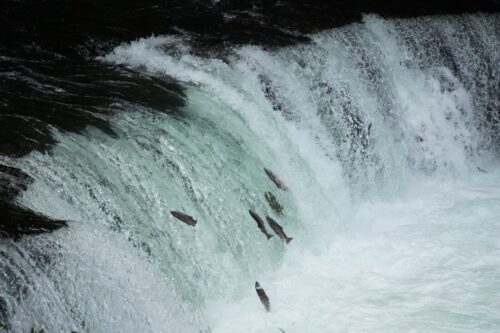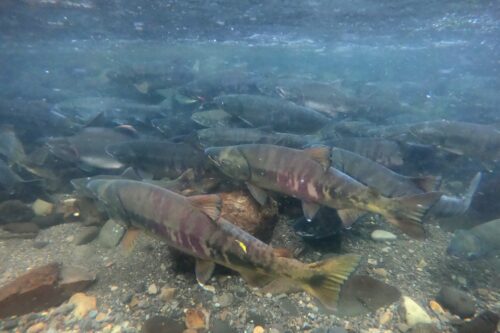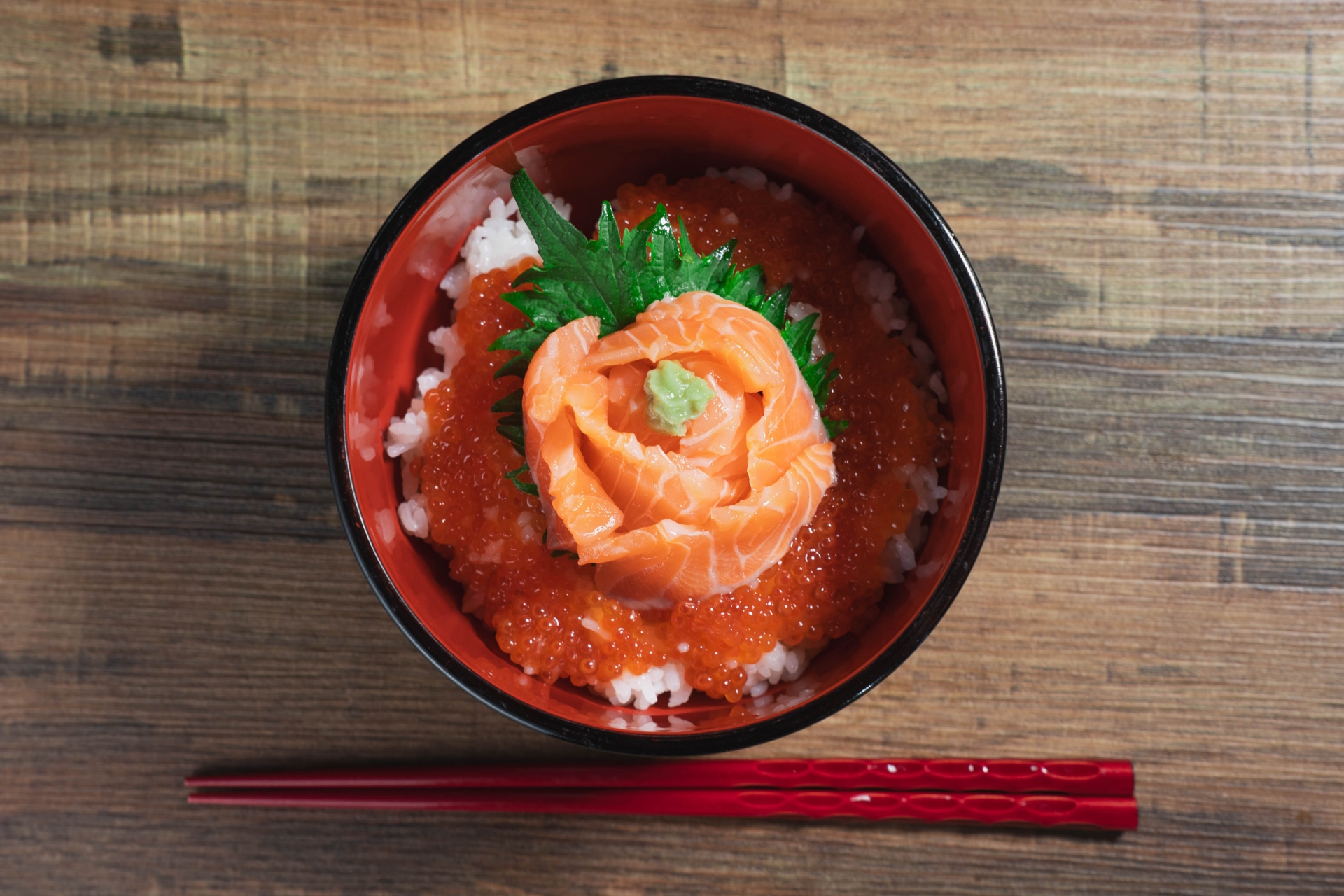The lure of fishing: Why bait is better than Brad Pitt
The 1992 film A River Runs Through It made Brad Pitt a star, ignited the popularity of fly fishing, and left a strong impression on me. I’ve always wanted to try fly fishing—the rod whipping smoothly, the line sparkling as it describes an arc in the air. It’s a beautiful, almost balletic activity, completely different from what I always do.
What I always do is ordinary bait fishing: just wandering along rivers and casting bait. Why don’t I switch to the graceful art of fly fishing? That’s simple math: Bait fishing is easier and catches more fish.
I knowingly quoted Hemingway in a past article: “When you can’t catch fish, think it gave you time to think about life.” I must confess I just pretended to be cool; to tell the truth, I hate to get skunked (go home empty-handed). This reveals the core of my human ego: I prefer assured success over aesthetic pursuit.
The salmon homecoming: From city carcass to eastern outskirts
Today, I’m introducing the charm of Hokkaido through the story of fish. Among river fish in Japan, the undisputed king is the salmon. You can see them in many rivers across Hokkaido this season.
In autumn, salmon return from the sea and die in their home river soon after spawning. When I lived in Sapporo, the capital city with a population of two million, I often saw salmon carcasses on the river shore. Since then, I’ve longed to see them swimming alive in the river. Last weekend, I finally went to a small town in the eastern outskirts of Hokkaido, famous as one of the starting points of the salmon homecoming.
My hotel was at the mouth of the river, and luckily, my room was river view on the 7th floor. I went to the window, not expecting much. To my complete surprise, I could see schools of salmon swimming vividly in the river even from the 7th floor! The river flow was slow at the estuary, and the surface waves made by the dense schools of salmon were clearly visible—so many that even the seagulls on the water looked annoyed.

The grand exchange: Salmon as the ocean’s gift to the forest
The life cycle of the salmon is astounding: it takes about one month for the juvenile to go down to the sea, and it returns to its home river after two to five years. The average size of a juvenile is about 20 mm and 0.4 g; the adult is about 80 cm and 8 kg. That’s a fortyfold increase in length and a 20,000-fold increase in weight.
Nature is impeccably designed. The grown salmon are supposed to die soon after spawning, and forest animals like bears and foxes readily eat the salmon carcasses. In other words, salmon brings a vast amount of nutrients from the sea back to the rivers and forests.
In that profound sense, it is not an exaggeration to say that our Hokkaido wooden furniture is actually made from salmon. The trees that supply our wood are fed by the bounty of the ocean, delivered inland by the ultimate sacrifice of the king of the rivers.
The human paradox: The joy of eating the roe
Salmon running up the river is truly the charm of Hokkaido in autumn. Hokkaido is the home of salmon in Japan, and this is why you can enjoy incredibly fresh salmon roe (Ikura) everywhere.
Herein lies the profound paradox and the final, amusing human twist: After witnessing this spectacular, life-and-death cycle of homecoming and sacrifice, you may hesitate to eat the salmon roe—the eggs that represent the future of the species. Yet, it is precisely because of this abundance and unique ecosystem that we have the chance to savor the freshest, most delicious Ikura in the world. It is the ultimate act of human appreciation (and consumption) of the grand ecological cycle.
Do you feel like coming to Hokkaido? Oh, mind you, it is prohibited by law to fish salmon in the river. So, you’ll have to settle for enjoying the beautiful sight—and eating the deliciously inevitable roe.


Shungo Ijima
He is travelling around the world. His passion is to explain Japan to the world, from the unique viewpoint accumulated through his career: overseas posting, MBA holder, former official of the Ministry of Finance.

